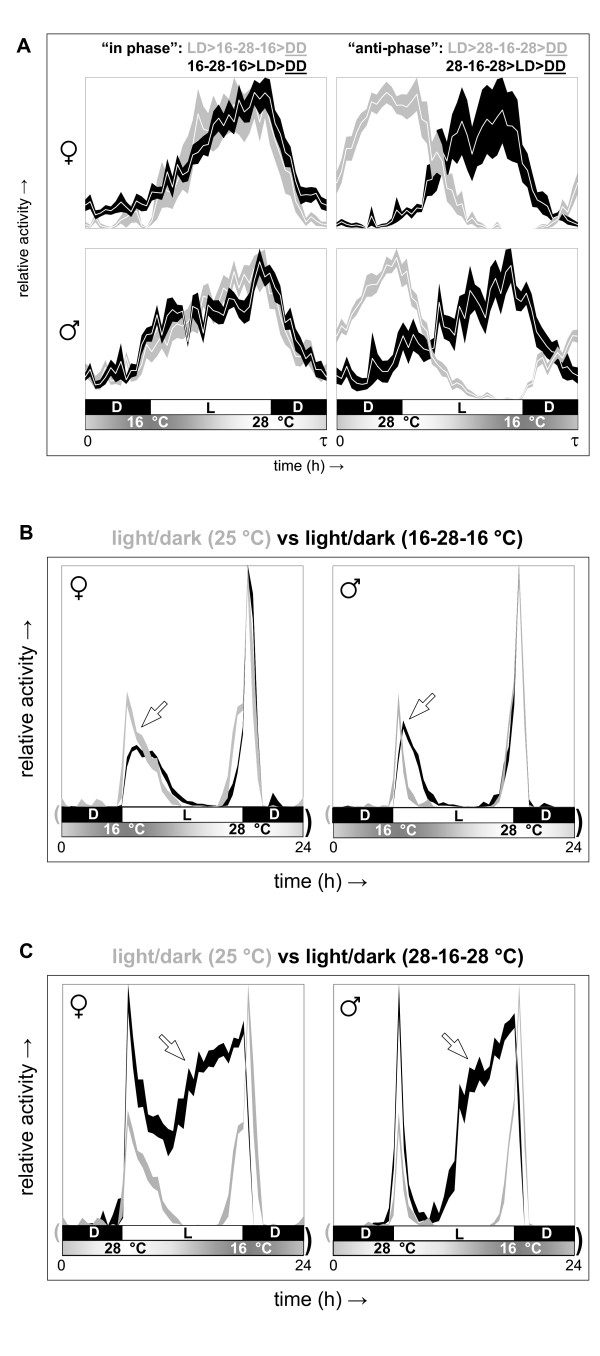Figure 5.
Under 'natural' circumstances, entrainment to daily temperature gradients is predicted to reinforce light-entrainment. (A) Groups of Canton-S male and female flies were sequentially subjected to 12-h light/12-h dark cycles (at constant 25°C for ≥7 days) and daily 16°C to 28°C temperature gradients (in constant darkness for ≥7 days; see profile Z7T4C4 in Additional file 2) and then released into free running conditions at 25°C in constant darkness to detect the represented circadian activity profiles. For 'in phase' alignment of the light and temperature cycles the subsequent circadian activity phase was essentially unaffected by the order of the previous treatments. In the context of 'anti-phase' alignment, however, the circadian activity phase was determined by the latter of the two environmental protocols and reversal of treatment order resulted in a shift to the opposite phase. (B) Simultaneous application of 'in phase' light and temperature treatments (black profiles) resulted in synchronized activity profiles similar to those found during light treatment (gray profiles) but with a more gradual increase of morning activity. (C) In contrast, when the same light-entrained profiles (indicated in gray) are compared with daily activity profiles representing simultaneous 'anti-phase' light and temperature treatment (indicated in black) the latter show a broad evening activity peak with a 5- to 6-h phase advance in onset as well as a relatively higher peak in morning activity. The activity profiles in all panelsrepresent the mean ± S.E.M. as measured from median activity records.

